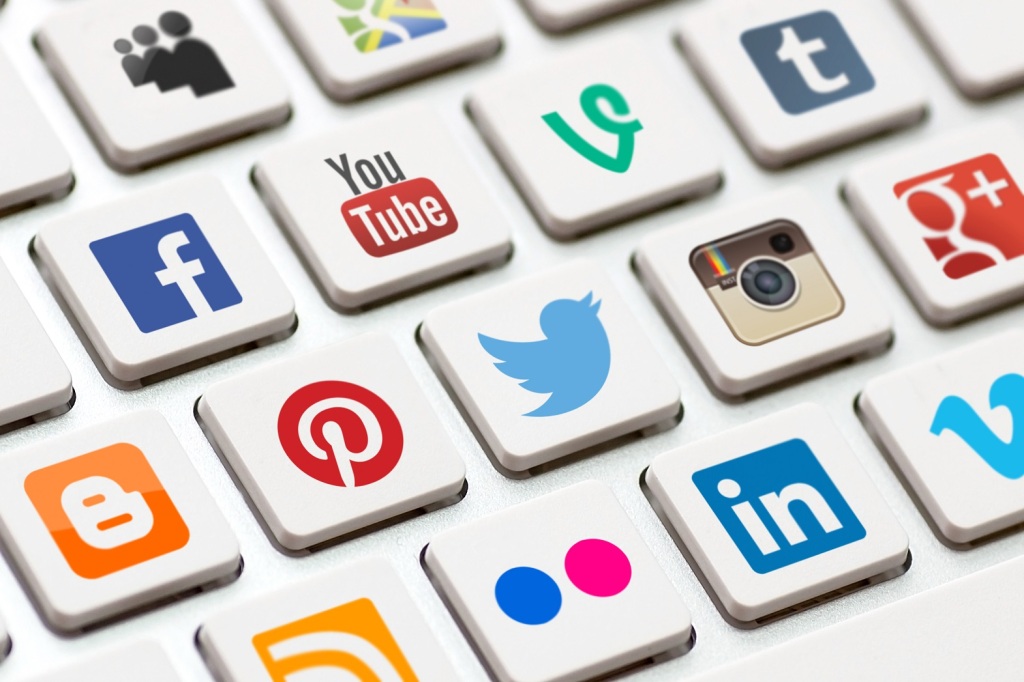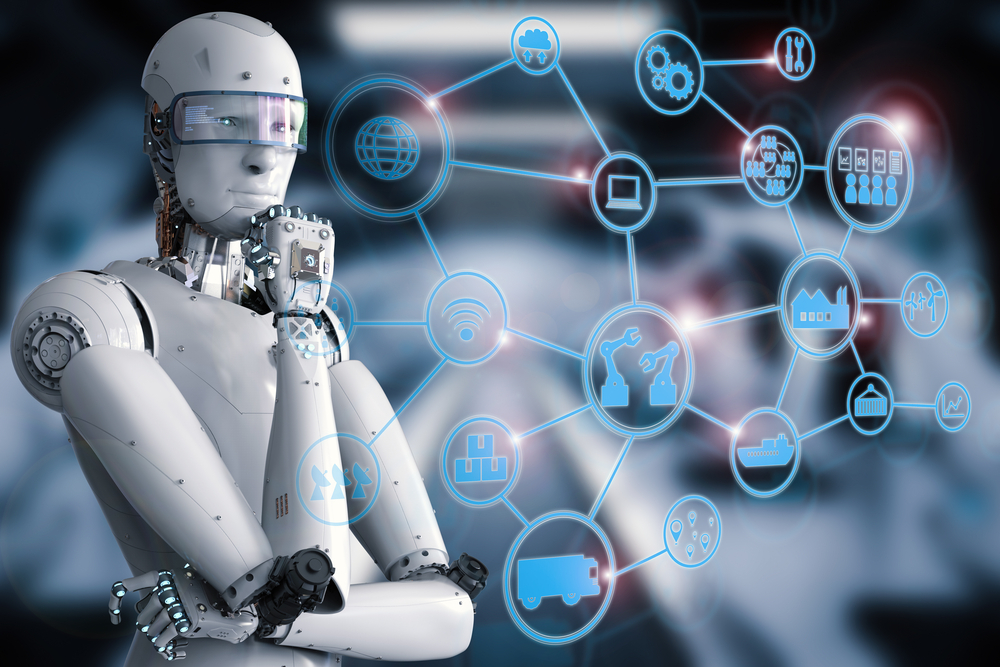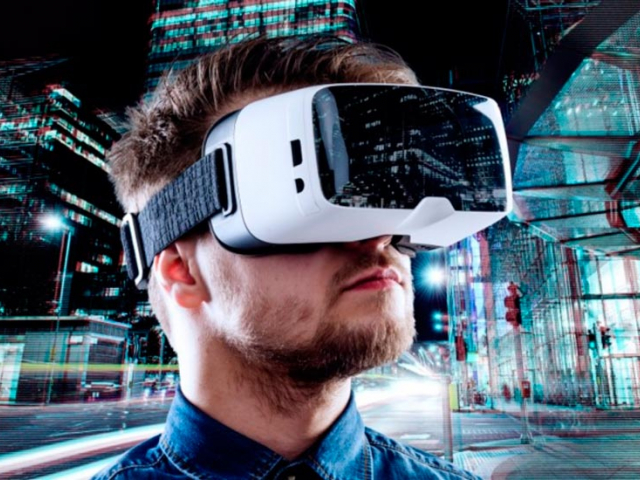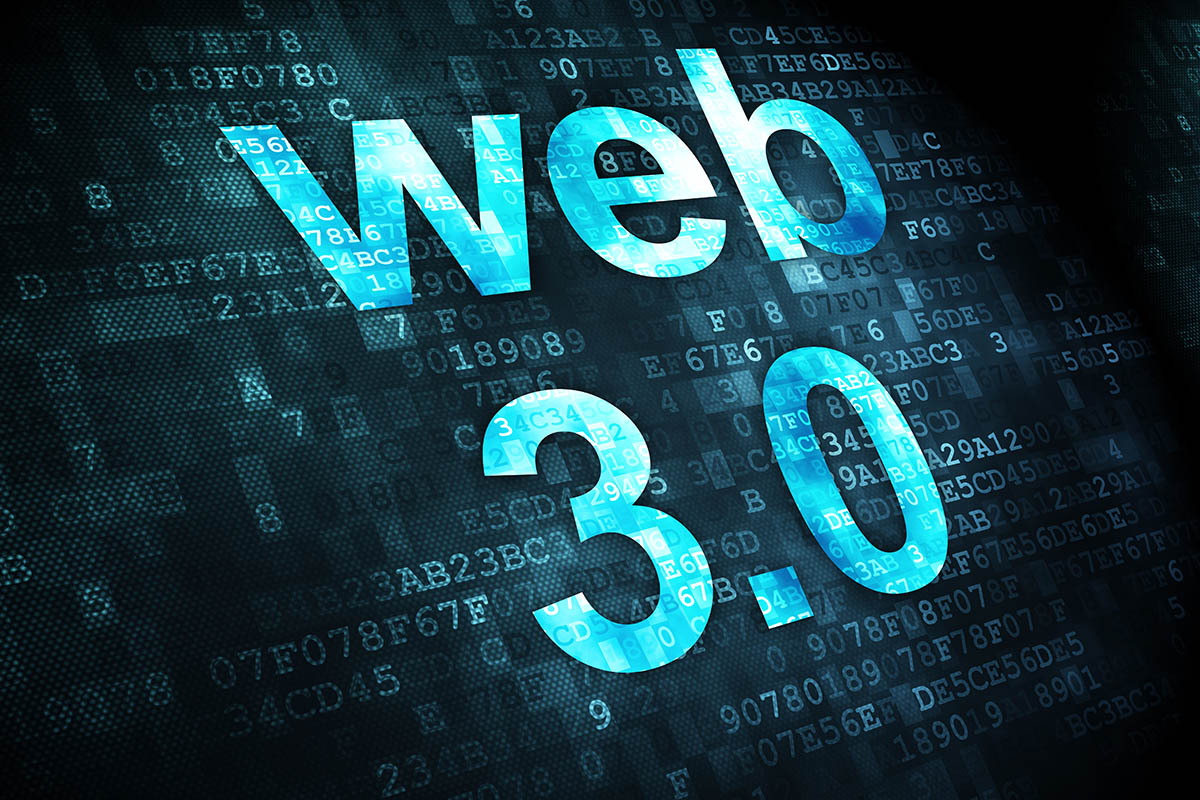Web 3.0: All the basics of the hype for beginners
In the last two decades, the Internet has changed dramatically: from Internet Relay Chat (IRC) we have moved to modern social media platforms. From simple digital payments to sophisticated online banking services, the technology we use every day has changed noticeably. We also got to know new, completely internet-based technologies such as crypto and blockchain.
The internet has become a vital part of human interaction and connectivity – and it’s constantly evolving. So far we’ve seen Web 1.0 and Web 2.0, but what can we actually expect from Web 3.0? We answer exactly this question and reveal what Web 3.0 will contain.
What is Web 3.0? Definition and explanation
Web 3.0 (often referred to as “Web3”) is the next generation of the Internet, which relies heavily on machine learning, artificial intelligence (AI), and blockchain technology. The exact origin of the term is disputed, because Tim Berners-Lee – the inventor of the Internet – spoke of Web3 as early as 1999, but initially used it in a different context. Later, Polkadot inventor and Ethereum co-founder Gavin Wood first used Web 3.0 in conjunction with a decentralized internet.
No Involuntary Use Of Data
While Web 2.0 focuses on user-created content hosted on centralized websites, Web 3.0 aims to give users more control over their online data.
The idea behind Web3 aims to create open, connected, intelligent websites and web applications with an improved machine-based understanding of data. Decentralization, DeFi (decentralized finance) and digital economy also play an important role in Web 3.0 as they allow all users to value the content created on the web.
In addition, it is also important to understand that Web 3.0 is an ever-changing concept. There is no single definition and its exact meaning can differ from person to person. Ultimately, however, all definitions are always about greater security, improved user-friendliness and more privacy. If you are looking for a Domain Backorder, contact Navicosoft.
The Evolution From Web 1.0 To Web 3.0
Even users with no technical knowledge can see that the Internet has changed significantly since it was used worldwide in the 1990s. However, the changes from Web 1.0 to Web 2.0 have gradually set in and the step towards Web 3.0 will not take place overnight, but will be a slow process.
Nevertheless, in the following we will try to explain the terms in more detail and draw clear distinctions between Web 1.0, Web 2.0 and Web 3.0.
What is Web 1.0?
Web 1.0 was the first generation of the Internet, spanning roughly the period from 1990 to 2005. Here were basic websites that were available to a large, global community for the first time and used commercially. Protocols like HTTP, HTML, and XML date back to the early days of the World Wide Web.
The first web browsers also date from this time, as did the first Internet providers that enabled a connection (via dial-up). The first web development tools and software languages such as Java and Javascript also have their origins in this period. Here the foundations were laid for the technologies that today determine our everyday life and bring many useful advantages.
What is Web 2.0?
The term “Web 2.0” was coined by Darcy DiNucci (web designer and author) in 1999 and refers to the modern cultural phenomenon in which the Internet allows more and more users to participate in various types of content through user-generated content and social media.
Web 2.0 has changed the way the world wide web is accessed: nowadays it’s perfectly normal to just use your smartphone and have thousands of apps at your disposal – and every day hundreds of new apps are coming in added to the app stores.
Our smart phones have high-resolution cameras that can deliver better quality than most cameras from the Web 1.0 era. In addition, nowadays everyone can easily and quickly create content and share it with others around the clock, which is an essential part of Web 2.0 – thanks to Facebook, Twitter and Co.
Social Media Strongly Determine Web 2.0
Today’s Internet generation has also triggered the social media frenzy, as YouTube, Instagram, Twitter and others followed the pioneers like MySpace or StudiVZ onto the scene. Digital communication has also reached a new peak, with people preferring to use apps like WhatsApp or Telegram over the old-fashioned SMS. Almost 4 billion people have Internet access today, compared to just 1 billion in 2005.
Of course, it’s also important to remember that Web 2.0 is also responsible for putting our personal information in the hands of large, centralized corporations. Big companies monetize our personal information by in turn selling it to marketers who run targeted advertising tailored to their specific niche audience.

Future of Web 3.0
Although we are currently still in Web 2.0, the way to the implementation of Web 3.0 ideas is not far away. There are already a large number of dApps (decentralized applications) that make up an important part of Web3.
Web 3.0 tokens are also essential for a decentralized internet. This is because interacting with the blockchain costs gas fees.
In exchange for owning, one’s data, Web 3.0 will very likely include some form of payment method for publishing data on the blockchain. This will be necessary to replace exploitative advertising and other direct solicitations by third parties who use the data against their users. Looking for a Domain Name Backorder? What are you waiting for? Contact Navicosoft.
There is currently no real information about Web 4.0, because so far not even Web 3.0 has been fully covered. However, it can be assumed that Web 4.0 will catapult the Internet into all aspects of everyday life. Smart homes with fridges connected to the internet or paying in supermarkets via smartphone are already part of everyday life. These technologies will become even more integrated into everyday life in the years and decades to come.
The Technical Aspects Of Web 3.0+]
So far it is difficult to predict how exactly Web 3.0 will look like in the end, after all, new technical breakthroughs can have a strong impact on development. However, most experts agree that the majority of Web3 concepts are already well known and will have a strong impact for decades to come.
Artificial Intelligence And Machine Learning
Because Web 3.0 machines can understand, read and decipher the meanings of a data set, they are also known as “artificial intelligence”. Although Web 2.0 already offers similar possibilities, it is still predominantly human-driven, which leaves room for corrupt or unfair behavior – biased product reviews, fake ratings and the like are done by bots and human hands to fool the current algorithms of different platforms.
The online shop giant Amazon is a suitable example here, because many sellers on the platform try to stand out from the competition with purchased reviews.
But online rating platforms such as Trustpilot also offer consumers the opportunity to rate a product or service. Unfortunately, a company can simply gather a large group of people and pay them to write positive reviews for their bad products. Artificial intelligence can help here in Web 3.0, which learns to distinguish between the real and the wrong in order to provide reliable data.
Decentralization: Blockchain and Crypto
Decentralized data networks already enable different users to sell or trade their own data without losing the right and property to them, risking privacy or having to rely on intermediaries. As a result, decentralized data networks will have a long list of data providers in the growing “data economy” in the future.
Today, for example, when users log into an app with an email address and password, when they like a YouTube video, or when an AI Alexa owner asks a question, all of this activity is being managed by tech giants like Google and Facebook are tracked and monitored in order to then target advertising more precisely.
In Web 3.0, however, data is being decentralized. Ultimately, this means that users still own their data. With the help of the Internet identity, you can log in securely via the Internet without being monitored unintentionally. The technical achievements of modern blockchains are also important in this context. If you are looking for a Backorder Domain, contact Navicosoft.
Simply put, blockchain is another layer of technology behind Web 3.0. It is even considered by many to be the foundation of Web3, as it redefines the data structures in the backend of the “semantic web”.
Blockchain is the decentralized driver employing smart contracts. These Smart Contracts define the logic of a Web 3.0 application. So, anyone who wants to create a blockchain application has to provide their application code on the common blockchain or use platforms like Polkadot to exchange data of any kind between different blockchains.
Social Networks In Web 3.0
The current social networks of the Web 2.0 generation are centralized, usually censored and have clear business goals of their own – the sale of advertising space of various kinds. It is possible that social networks are paid for by large organizations, companies or even governments to carry out a specific Enforce agenda or attempt to steer or control user opinion in a particular direction.
In Web 3.0, decentralized social media platforms respect transparency. So, it will be harder to do propaganda of any kind as the actors behind the accounts are more visible. With a decentralized identity, users also own their own data – it is not tapped and sold for profit by today’s social media platforms.
A great example of Web 3.0 social networking that already exists is Steemit. Content providers can earn from STEEM Web 3.0 cryptocoins if their content is of high quality, while other network users can earn money by curating user-generated content. It is similar to the Reddit platform in many ways, but rewards content consumers and encourages users to continue participating.
Current Web 3.0 Applications And Use Cases
The theoretical background of Web 3.0 is certainly interesting, but most users are more interested in the practical implementation. However, it is important to know in advance that Web3 will continue to use the same existing infrastructure – when we speak of a new Internet, we do not mean anything completely new. Instead, the existing technology is gradually being upgraded and decentralized.
Businesses and developers will have to build their systems from the ground up if they don’t want to be overtaken by the competition. In the case of Big Data, they might even have to change their entire business model. Targeted advertising based on our forced and often unintentionally collected data will most likely no longer work for them with the current model.
But what exactly will the upcoming applications look like and what will change specifically?
dApps
From the outside, a dApp will not differ from the apps that are already available on smartphones today. However, they will have the big difference that they are decentralized. As mentioned above, this applies to social networks, for example.
What Is A Dapp? – Definition And Basics
The abbreviation dApp stands for “decentralized application”. With a dApp, the individual components are in a peer-to-peer network.
But messenger programs such as WhatsApp and Telegram could also be replaced by decentralized variants in the future. Finally, many intelligence services have openly admitted that they keep a backdoor open for various governments to gain access to our news and data.
Cloud storage, which has been particularly popular for a number of years, will also change. Today’s variants such as Dropbox or Google Drive are popular and simple, but have the disadvantage that they are also often the target of large hacker groups. Decentralized solutions are much more effective here and can offer greater security. Are you looking for a Domain Backorder Service? Contact Navicosoft.
The first decentralized exchanges (also called “DEX”) are already active, but here too a larger number of providers will appear in the future. After all, these providers score with particularly strong security measures, better control of their own assets and greater privacy.
Virtual Assistants And Smart Homes
Even if Siri, Alexa and Co are already an integral part of everyday life in Web 2.0, they are only the beginning of technologies that will be integrated more and more in the coming decades. Speech recognition in particular is viewed by many experts as an important basic building block for future Web 3.0 applications.

At the same time, improved artificial intelligence algorithms also play an important role here, which can respond even faster, more efficiently and ultimately better to the wishes and needs of users. The current generations of virtual assistants can only perform very simple actions – for example, set an alarm, save a note or provide answers to a few questions. With Web 3.0 technology, the possibilities are much more complex and, above all, more optimized.
Artificial Intelligence Plays An Important Role In Web 3.0.
The smart homes of the future will also access Web3 technologies and will continue to develop significantly in the coming years. In recent years, the possibilities in this area have become much more complex – not least thanks to the further development of virtual assistants. But smart devices as well as higher energy efficiency are already on the horizon of the future.

For example, sensors are conceivable that automatically switch lights on and off or dim them – depending on the light irradiation from outside. Smart heating and air conditioning devices and improved communication with the home network are also upcoming achievements that can benefit from Web 3.0 and decentralization.
3D Design And Graphics
Virtual reality will play an important role in Web 3.0.
One of the most important Web 3.0 applications is 3D graphics, where 3D design is widely and rapidly used in numerous websites and services. The basic design of the Internet will change significantly in the coming decades and the first signs of these changes can already be seen today.
3D graphics attract customer interaction through popular games, museum guides, e-commerce and more. The combination of 3D graphics and augmented reality and virtual reality technologies can provide immersive results in relation to various real-world environments, places, objects and much more.
In addition, the Metaverse is an area in which these experiences play a pioneering role. In the areas of UI and UX, work is already underway to make information more intuitive for web users.
Web 3.0 and the Metaverse
The term metaverse generally refers to a shared virtual world, or computer-controlled environment, that is exposed to users over the Internet. It is ultimately a digital space made more lifelike through the use of “augmented reality” – a combination of augmented, virtual and mixed reality.
Currently, users interact with each other online mainly through social media platforms or through messaging applications. In the virtual spaces of the metaverse, on the other hand, users have their own “character” who can walk around and interact with other users. For Backorder Domain Name, contact Navicosoft.
This allows users to communicate with each other via avatars, text messages, sounds, music videos or video games – in a 3D reality. First examples of this technology can be found in Decentraland and The Sandbox, among others.
The role of Web 3.0 is crucial in making the Metaverse a reality, especially when it leverages blockchain technology .
At present, the Metaverse is more associated with virtual video games, but in the future it will not be limited to just games. The scope of the Web 3.0 metaverse is much broader, eventually even including the education industry: for example, in an education metaverse, users can enter an immersive classroom and interact with their teachers and other students.
Non-Fungible Tokens (NFT) And Web 3.0
Even though the hype surrounding non-fungible tokens (NFTs) has increased sharply since 2021, the technology and applications are still in their metaphorical infancy. With Web 3.0, the NFT technology will also become more efficient and better optimized and at the same time represent an essential building block for the metaverse.
In the proposed NFT-powered Metaverse , users can own things like avatars, digital clothing, and other items and transfer them across platforms via a crypto wallet.
For example, once launched, Avatar NFTs can help users verify their identities in Web 3.0 and the Metaverse by associating information and data locked on the blockchain. Various attributes are assigned to these proofs of identity, on the basis of which the individuality of a person is verified and checked.
NFTs as an important safety aspect
Storing digital identity as an NFT can help mitigate numerous fraud threats from fake IDs, bot accounts, and more.
Additionally, building a creator economy in the decentralized metaverse creates the need for digital ID authentication on the blockchain to prevent copyright infringement and intellectual property theft while confirming purchase or ownership of a work.
The advantages of Web 3.0
Advocates of Web 3.0 are primarily convinced of the many advantages that will change the Internet significantly in the years and decades to come. Some of them are:
- Decentralization: Single, centered nodes and networks are more vulnerable to hacking attacks than decentralized variants.
- no involuntary data transfer: Nowadays, Facebook, Google and Co track every step we take on the World Wide Web. In Web 3.0, each user decides which data is voluntarily disclosed and passed on.
- Scalable data protection: Many of the popular blockchains are considered to be particularly secure and can protect user data more efficiently than conventional systems.
- democratized Internet: Currently, the Internet is largely influenced and controlled by governments and corporations. This influence would be greatly reduced in Web 3.0, while users themselves can exert greater influence.
- Less censorship: Twitter, Facebook and Co often have policies for removing content that seem arbitrary. In Web 3.0, the risk of censorship is greatly reduced and content can be posted more freely.
Increased use of open technologies: There are already many software solutions on the Internet whose source code is freely accessible and can be viewed by experts. However, large corporations in particular do not allow access here, so users cannot always see how data is handled at all. Web 3.0 will rely even more heavily on open technologies, which will ultimately benefit the user base. . If you are looking for a Domain Backorder, contact Navicosoft.
The disadvantages of Web 3.0
While Web3 may sound like a utopian dreamland to many Internet users, there are also some potential downsides that advances in technology can bring. Here are some negative points in the overview:
No state influence: A lack of regulation always has the disadvantage that it could lead to “anarchy on the internet”.
- increased energy demand: It is difficult to predict how strong the energy demand of upcoming blockchain technologies will be. However, it can be assumed that the computationally intensive variants will cause global energy demand to rise sharply.
- Potential influences of large corporations: The big Internet giants such as Google and Facebook naturally want to exert a strong influence on the development of Web 3.0 in order not to lose their supremacy in the market. So it remains to be seen how “free” Web3 will ultimately be from these influences.
- Difficult transition to Web3: Even if the Internet is used by billions of people today, it was viewed more critically, especially in its early days. It will be just as difficult to convince today’s generations to switch from Web 2.0 to 3.0. So, the transition could take a long time.
Conclusion On Web 3.0
The new Internet in the form of Web 3.0 will be even more personal and geared more towards the individual user. For example, even more complex virtual assistants, who can access decentralized information more efficiently and in a more understandable way, will play an important role. Looking for a Domain Name Backorder? What are you waiting for? Contact Navicosoft.
When the step to Web 3.0 is taken, the Internet will be exponentially more integrated into our daily lives. Billions of people already use the Internet every day, but in the future, Internet-related technologies will become almost imperceptibly integrated into everyday life.
However, it remains to be seen whether many of the initially utopian-sounding ideas can actually be implemented as desired. Blockchain and crypto projects will play a major role here, but are still new territory for many users and are viewed rather critically. Only the future can tell how exactly the changeover will take place.
